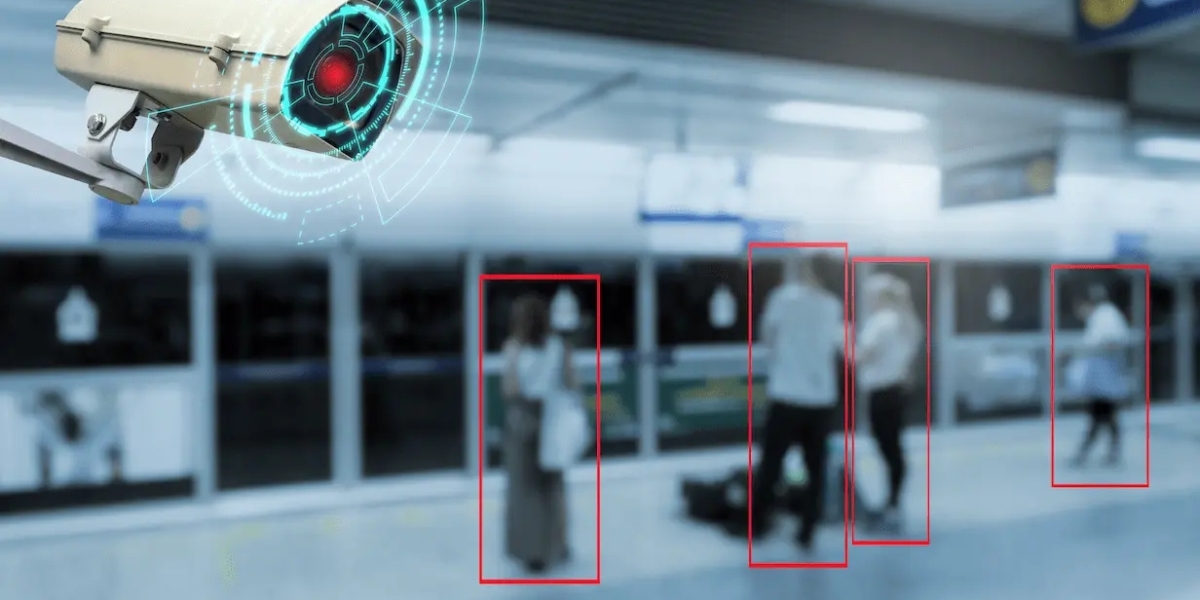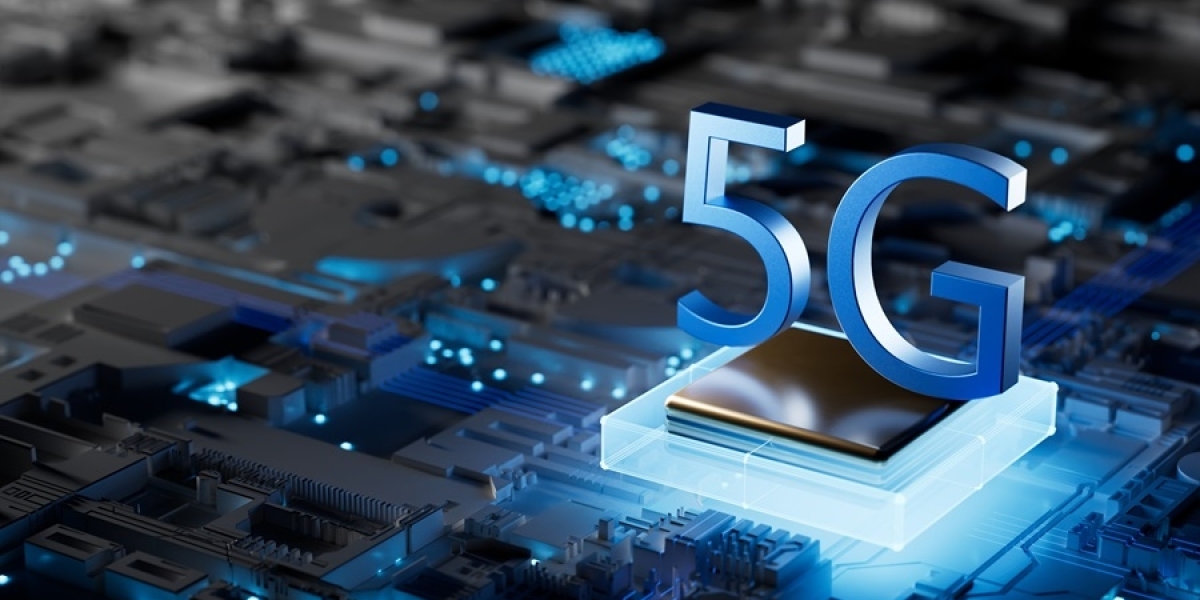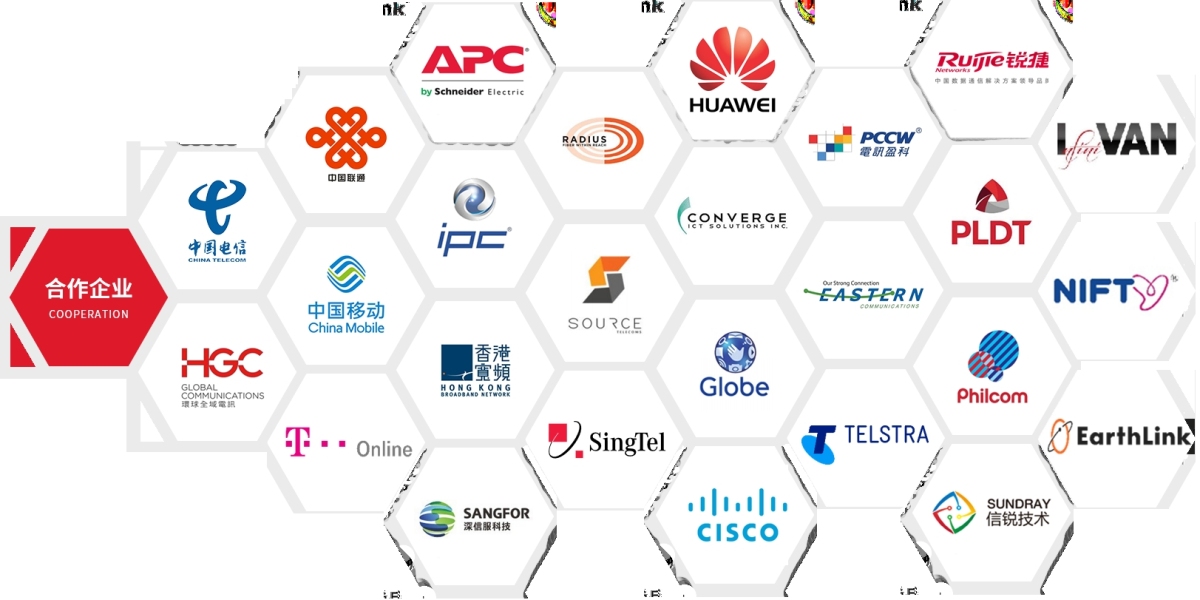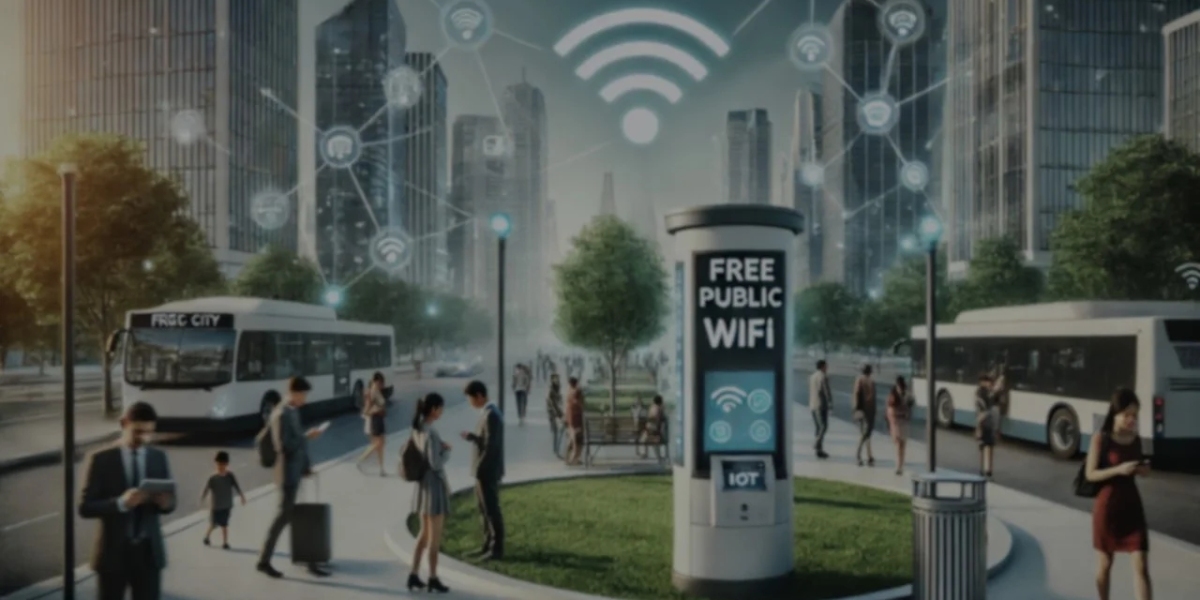Introduction: Why Public Safety Needs Smart CCTV
Key Features of Modern CCTV Systems
Benefits of Smart CCTV for Cities and Barangays
Real-World Applications in the Philippines
Integration with LGU Command Centers and Emergency Response
Privacy, Regulation, and Responsible Use
Roadmap for LGU CCTV Deployment
Frequently Asked Questions (FAQs)
SEO Tags
1. Introduction: Why Public Safety Needs Smart CCTV
Public safety remains a top priority for every city and municipality in the Philippines. As urban populations grow and crime becomes more complex, traditional safety measures often fall short. In response, local government units (LGUs) are turning to Smart CCTV systems — advanced video surveillance technologies that do more than just record footage.
Unlike basic analog CCTV cameras, Smart CCTV uses high-resolution imaging, real-time cloud access, and artificial intelligence to actively monitor and detect suspicious behavior. These systems can recognize faces, track vehicles, and send alerts — all without manual intervention.
For cities aiming to build a safe, secure, and digitally responsive environment, Smart CCTV is no longer optional. It is now a core element of modern urban governance and is frequently included in smart city planning strategies.
From deterring petty theft in barangays to enabling coordinated disaster response, smart surveillance is empowering LGUs to take a proactive approach to community safety.
2. Key Features of Modern CCTV Systems
Smart CCTV systems are a major leap forward from traditional analog surveillance. They combine advanced hardware with intelligent software, offering local governments the ability to detect, analyze, and respond to public safety threats in real time.
Here are the most critical features that define modern Smart CCTV systems used in Philippine cities and barangays today:
High-Definition and Night Vision Cameras
Unlike low-resolution analog cameras, modern Smart CCTV units offer full HD and even 4K video clarity. This allows law enforcement to identify facial features, license plates, and detailed activity — even in challenging lighting. Night vision infrared capabilities ensure 24/7 monitoring, even in remote or poorly lit areas.
AI-Powered Video Analytics
Artificial Intelligence allows Smart CCTV to recognize objects, people, and patterns. For instance, AI can be used to detect unattended bags in public spaces, identify loitering behavior, or automatically alert when a person enters a restricted area. These systems reduce the need for constant manual monitoring.
Facial Recognition and Vehicle Tracking
Smart cameras can match faces against watchlists, helping to identify persons of interest in real time. In traffic monitoring, vehicle tracking capabilities allow systems to recognize number plates, detect speeding, or track stolen vehicles as they move through city streets.
Cloud-Based Storage and Remote Access
Unlike traditional CCTV systems that rely on local DVRs, modern setups use cloud storage to upload footage in real time. This offers several advantages: authorized personnel can access footage from anywhere, backups are safer from physical damage, and video retrieval is faster.
Motion Detection and Real-Time Alerts
Smart cameras can be set to detect motion in specific areas and trigger alerts. For example, a camera near a school zone can send an SMS to city police if someone is seen loitering at odd hours. Alerts can be sent via email, app notifications, or directly to command center dashboards.
Edge Computing Capabilities
Some newer cameras process data directly at the device level. This reduces the need for constant internet bandwidth and allows faster reaction times. Edge-enabled cameras can perform tasks like license plate recognition or face matching without waiting for cloud processing.
Integration with Other Smart Systems
Modern Smart CCTV can integrate seamlessly with other city systems, including traffic control, emergency response, and weather alerts. This means a camera detecting flooding on a street can trigger traffic rerouting alerts or inform disaster response teams instantly.
Smart CCTV is not just about surveillance; it’s about real-time decision-making powered by data. These features enable LGUs to protect citizens more effectively while building trust in digital governance.
3. Benefits of Smart CCTV for Cities and Barangays
Smart CCTV systems deliver a wide range of advantages that go far beyond basic surveillance. For local government units in the Philippines — especially those operating in densely populated or high-risk areas — smart video monitoring offers both short-term operational improvements and long-term strategic value.
1. Real-Time Crime Prevention
Smart CCTV systems can detect unusual or suspicious activity before it escalates. AI-powered behavior recognition, motion tracking, and facial identification enable authorities to intervene faster. This real-time detection capability helps prevent theft, vandalism, and assaults — especially in high-traffic public spaces.
2. Improved Police and Emergency Response
With instant access to video feeds from any device, police or barangay tanods can respond more quickly and with more accurate information. During emergencies such as fires, floods, or altercations, having visual confirmation of what's happening on the ground leads to faster dispatch and better coordination.
3. Community Safety and Confidence
Citizens are more likely to feel secure in areas where Smart CCTV is installed. The visible presence of advanced surveillance acts as a deterrent to crime and encourages lawful behavior. Barangays with active CCTV monitoring often see a measurable reduction in petty crime and public disturbances.
4. Evidence Collection and Legal Support
Recorded footage provides reliable evidence that can be used in criminal investigations and legal proceedings. Smart cameras that timestamp and geo-tag videos offer clear proof of events, reducing disputes and enhancing the credibility of local enforcement teams.
5. Traffic and Road Safety Management
In busy urban zones, Smart CCTV systems play a critical role in managing traffic congestion and road violations. Cameras placed at intersections or highways can detect red-light running, illegal parking, or traffic buildup. Data gathered can support urban planning and road safety improvements.
6. Disaster Monitoring and Crisis Response
During typhoons, floods, or earthquakes, CCTV systems become essential tools for remote monitoring. Smart cameras placed in flood-prone areas or evacuation centers can send live footage to municipal command centers, helping responders assess the situation without being physically present.
7. Resource Optimization for LGUs
By automating surveillance and detection, LGUs can reduce the number of personnel needed for physical patrols. Human resources can be reallocated to more strategic tasks while the cameras maintain continuous oversight. Over time, this leads to more efficient public safety operations at a lower cost.
In summary, Smart CCTV is a scalable, multi-functional tool that strengthens urban resilience and empowers local governments to maintain peace, order, and public trust. It aligns directly with the goals of smart governance and inclusive city management.
4. Real-World Applications in the Philippines
Smart CCTV systems are no longer a futuristic concept — they are actively being deployed across various cities and municipalities in the Philippines. From major urban centers to developing provincial towns, LGUs are harnessing smart surveillance to improve security, optimize traffic, and coordinate emergency responses.
Case 1: Quezon City – Anti-Crime Smart Surveillance Network
Quezon City operates one of the largest integrated CCTV command centers in the country. The city uses high-resolution cameras with facial recognition and plate tracking features. These systems are connected to a 24/7 command center where trained personnel monitor real-time feeds from all districts. In several cases, stolen vehicles and wanted individuals were identified within hours, leading to rapid arrests.
Case 2: Davao City – Real-Time Public Safety Integration
Davao City is known for its strict public safety measures. The local government deployed smart cameras around marketplaces, highways, and public terminals. What sets Davao apart is the integration of these CCTV systems with their emergency dispatch and city-wide radio communication platforms. This allows responders to coordinate directly with video operators during incidents.
Case 3: Taguig City – School Zone Monitoring
To protect students and regulate traffic near school zones, Taguig City implemented Smart CCTV equipped with motion detection and people counting features. These systems help identify peak traffic times, improve pedestrian safety, and alert law enforcement when suspicious behavior is detected near school areas.
Case 4: Valenzuela City – Cloud-Based Command Center
Valenzuela integrated its Smart CCTV system with cloud infrastructure, enabling mobile access to surveillance data from tablets and laptops used by city staff. This allowed remote barangays to be monitored even when physical access to city hall servers was disrupted. The cloud integration also reduced downtime and allowed faster video playback during investigations.
Case 5: Cebu City – Traffic Management and Violation Detection
Cebu City faced growing congestion and traffic violations in central districts. As a solution, they installed smart traffic cameras capable of detecting illegal parking, swerving, and red-light running. These systems automatically generate reports and send violation images to enforcers. Over time, traffic discipline improved and manual apprehensions were reduced.
Case 6: Marikina City – Flood Early Warning System with Visual Verification
Marikina is prone to flooding, especially during heavy monsoon seasons. To complement their water-level sensors, the LGU deployed Smart CCTV units on bridges and creeks. These cameras send live footage to the disaster risk reduction office, allowing visual confirmation of water conditions and helping officials decide when to raise alerts or evacuate communities.
Case 7: Municipality of Baliuag – Barangay Surveillance Expansion
Baliuag, a municipality in Bulacan, took a proactive step by extending Smart CCTV coverage to barangay level. Each barangay hall and key public area was equipped with cameras linked to the municipal data center. This initiative empowered barangay captains to monitor local events, respond to complaints more quickly, and promote transparency in community activities.
These real-world applications illustrate how Smart CCTV systems — when properly deployed and maintained — can make a tangible difference in citizen safety, city efficiency, and digital governance. The Philippine government, through agencies like DILG and DICT, continues to support these initiatives through funding, training, and technical standards.
5. Integration with LGU Command Centers and Emergency Response
Smart CCTV systems deliver the highest value when they are integrated into broader city management ecosystems — especially command centers and emergency response platforms. For Philippine LGUs, this integration transforms surveillance from passive recording into active, coordinated action that can save lives and reduce response time.
Centralized Monitoring through Command Centers
Many cities and municipalities now operate centralized command centers, where multiple public safety data sources are unified. Smart CCTV feeds form the visual core of these centers. Operators can view live footage from all connected areas, zoom in on incidents, switch camera angles, and archive important events. This visibility helps decision-makers respond faster and more accurately.
Automated Alert Routing to Emergency Responders
When a Smart CCTV system detects an anomaly — such as a traffic accident, public disturbance, or unauthorized intrusion — it can automatically send alerts to police stations, fire departments, or barangay rescue units. These alerts include real-time images or short video clips, helping responders assess the situation before arriving on site.
Integration with GIS and Mapping Tools
Many LGU command centers pair CCTV feeds with digital maps of the city. This allows incidents to be located instantly based on camera positioning. When an alert is triggered, operators can pinpoint the exact location on a map and determine the nearest available responders or facilities. This geographical context enhances coordination and route planning.
Connection with Public Warning Systems
Smart CCTV systems can be linked with public address systems or sirens. In case of emergencies like fire or flooding, visual confirmation from surveillance can trigger announcements to evacuate areas or activate disaster protocols. For example, if a CCTV feed confirms rising floodwaters under a bridge, a siren can be triggered in nearby barangays.
Real-Time Data Sharing Across Departments
City health departments, traffic bureaus, disaster response units, and law enforcement all benefit from access to Smart CCTV. A well-integrated system allows different agencies to see the same data without duplication. For instance, the same camera footage used to monitor a protest for security can also be analyzed later for traffic pattern data.
Mobile Access for Field Units
Many LGUs now provide mobile access to Smart CCTV feeds through tablets or secure mobile apps. Field responders, barangay officials, and patrol teams can view live video while en route to incidents. This real-time access improves situational awareness and ensures appropriate response measures are taken.
Disaster Risk Reduction and Monitoring
During typhoons or earthquakes, Smart CCTV allows LGUs to monitor evacuation centers, check road conditions, and verify the safety of critical infrastructure like hospitals and bridges — without needing to send staff into hazardous zones. This greatly improves the LGU's ability to manage large-scale disasters with limited manpower.
Smart CCTV becomes exponentially more powerful when it is part of an integrated ecosystem. It supports proactive decision-making, multiplies the effectiveness of emergency services, and ensures that LGUs deliver faster, smarter, and safer public services.
6. Privacy, Regulation, and Responsible Use
As Smart CCTV systems become increasingly embedded in public spaces, questions around privacy, surveillance ethics, and legal compliance are more important than ever. While these technologies offer undeniable security benefits, local governments must also uphold the rights of citizens — particularly the right to privacy and freedom from unlawful surveillance.
Compliance with the Data Privacy Act (RA 10173)
The Data Privacy Act of 2012 outlines how personal information, including visual data, should be collected, stored, and shared. CCTV footage that captures identifiable individuals qualifies as personal data. Therefore, LGUs must:
Appoint a Data Protection Officer (DPO)
Conduct a Privacy Impact Assessment (PIA)
Implement data retention and disposal policies
Inform citizens when they are entering monitored zones
Secure storage using encrypted servers and restricted access
Failure to comply can lead to legal sanctions, reputational damage, and public distrust.
Transparency with the Public
LGUs should inform residents when Smart CCTV is installed in public spaces. This can be done through signage, public consultations, or barangay information drives. Being open about surveillance builds trust and shows that the goal is public safety, not authoritarian control.
Purpose Limitation and Data Minimization
Surveillance should only be conducted for specific, legitimate purposes — such as crime prevention, emergency monitoring, or traffic management. Cameras should not be used to track political activity, monitor private residences, or conduct blanket surveillance of peaceful citizens.
Data collected must be limited to what is necessary. For instance, storing facial recognition data from every passerby indefinitely would likely be considered excessive.
Access Controls and Audit Trails
Only authorized personnel should have access to CCTV footage, and their activity should be logged and auditable. Municipal IT departments must implement access roles, password policies, and regular reviews to ensure data is not misused or leaked.
Audit trails — digital logs of who accessed what and when — help deter abuse and enable forensic reviews if violations occur.
Footage Retention and Disposal Policies
LGUs must define how long video recordings are stored. Typically, footage is retained for 30 to 90 days unless flagged for investigation. After that, files should be deleted securely using data wiping tools. This ensures that archives do not become liability risks.
Avoiding Surveillance Overreach
It is important to strike a balance between safety and civil liberty. Smart CCTV should not be used to surveil religious gatherings, political protests, or private property without cause. Overreach can lead to community backlash and potentially violate constitutional rights.
Engaging Civil Society and Legal Experts
Before large-scale Smart CCTV deployment, LGUs should consult with civil society groups, legal experts, and data privacy advocates. These stakeholders can help design safeguards, review policy documents, and raise public awareness.
Smart technology must be paired with smart governance. Responsible use of Smart CCTV not only protects citizens from crime — it also protects them from unjust surveillance, builds public trust, and ensures that innovation aligns with democratic values.
7. Roadmap for LGU CCTV Deployment
Successfully implementing a Smart CCTV system requires more than just buying cameras and installing them. For local government units (LGUs) in the Philippines, deployment must be carefully planned, legally compliant, community-informed, and aligned with long-term digital governance goals.
Step 1: Conduct a Needs Assessment
Begin by identifying key public safety problems in your area. Are there specific barangays with high crime rates? Is traffic congestion a major issue? Do evacuation centers need monitoring during disasters? The answers will help prioritize where CCTV deployment can have the most impact.
Step 2: Engage Stakeholders
Include barangay leaders, police units, community organizations, and IT staff in planning discussions. Their insights will help define practical camera locations, clarify privacy concerns, and ensure local buy-in.
Step 3: Choose the Right Technology Partners
Select trusted technology vendors with experience in LGU projects. Providers should offer not only hardware but also cloud storage, AI analytics, training, and maintenance. Evaluate vendors based on DICT guidelines, data privacy compliance, and long-term support.
Step 4: Plan for Legal and Privacy Compliance
Before deployment, coordinate with the National Privacy Commission and your Data Protection Officer (DPO). Prepare a privacy notice, signage for monitored areas, a data retention policy, and access control procedures. Conduct a Privacy Impact Assessment if required.
Step 5: Pilot the System in Priority Areas
Start with a small, high-visibility zone — such as a public market, municipal hall, or crime-prone intersection. Use this pilot to test camera performance, alert functions, cloud storage reliability, and coordination with local responders.
Step 6: Establish a Command or Monitoring Center
Create a central space where live CCTV feeds can be viewed. This can be a dedicated operations center or integrated into existing public safety units. Assign trained staff to monitor cameras, verify alerts, and document incidents.
Step 7: Train Personnel and Barangay Operators
Effective use of Smart CCTV depends on people. Train operators on camera use, data handling, incident response, and cloud dashboard tools. Barangay staff should understand how to retrieve footage, escalate issues, and report system failures.
Step 8: Expand Gradually and Strategically
Once the pilot proves successful, expand coverage to more barangays, streets, and facilities. Prioritize areas based on crime statistics, community feedback, and disaster risk maps. Avoid over-surveillance and ensure installations are purposeful.
Step 9: Monitor Performance and Community Feedback
Track key indicators such as crime rate reductions, faster emergency response times, and complaint resolutions. Also listen to public feedback. Are citizens feeling safer? Are there privacy concerns? Use this data to adjust and improve the system.
Step 10: Maintain, Upgrade, and Sustain
Set a clear budget and plan for system maintenance. Replace faulty units, update software, and periodically review whether the system still meets the community’s needs. Also explore integration with future smart city platforms such as traffic sensors, flood monitors, or AI analytics.
By following this roadmap, LGUs can ensure their Smart CCTV deployment is not just a technical upgrade — but a meaningful public safety improvement that benefits citizens and aligns with the vision of smarter, safer Philippine cities.
8. Frequently Asked Questions (FAQs)
Q1: What is Smart CCTV and how is it different from traditional CCTV?
Smart CCTV refers to modern surveillance systems equipped with high-definition video, cloud connectivity, and artificial intelligence. Unlike traditional CCTV that only records video passively, Smart CCTV can detect motion, recognize faces, track vehicles, and send real-time alerts — enabling faster, more intelligent public safety responses.
Q2: Can barangays and small towns afford Smart CCTV systems?
Yes. Many smart CCTV providers offer scalable solutions that start small and grow over time. LGUs can deploy a few strategic cameras first — in public markets, intersections, or barangay halls — and expand later. National government grants or public-private partnerships may also support deployment.
Q3: Are Smart CCTV systems compliant with Philippine laws?
They can be — if implemented properly. LGUs must comply with the Data Privacy Act of 2012 (RA 10173) and coordinate with the National Privacy Commission. This includes appointing a Data Protection Officer, notifying citizens, protecting stored footage, and conducting privacy assessments when necessary.
Q4: Will Smart CCTV invade people's privacy?
If used responsibly, Smart CCTV enhances public safety without violating individual rights. LGUs should be transparent, limit monitoring to public areas, and avoid collecting unnecessary data. It’s also important to secure access to footage and set strict retention policies.
Q5: How does Smart CCTV help during emergencies or disasters?
During typhoons, fires, earthquakes, or other crises, Smart CCTV allows LGUs to visually monitor key areas in real time — such as evacuation sites, bridges, or hospitals. This helps assess damage, coordinate response, and protect both responders and citizens from further risk.
Q6: Can Smart CCTV work with mobile phones or tablets?
Yes. Many modern systems offer cloud-based apps or web dashboards that let authorized personnel access live video feeds from mobile devices. This empowers police officers, barangay tanods, and emergency teams to view scenes while responding to incidents.
Q7: Who should operate and manage the CCTV system?
Typically, LGU IT departments or public safety units manage the technical operations. However, barangay leaders and designated staff can be trained to use the system, retrieve footage, and report issues. Some municipalities also work with private partners for maintenance and support.
Q8: How long should CCTV footage be stored?
It depends on local policy, but most LGUs retain footage for 30 to 90 days unless it’s needed for investigation. After this period, the data should be securely deleted to reduce storage costs and protect citizen privacy.
Q9: What if the internet goes down — will the CCTV stop working?
Smart CCTV systems often include local backup recording features. This means footage can still be saved to a memory card or internal hard drive. Once the internet is restored, the data syncs with the cloud. For mission-critical areas, LGUs can use 4G or fiber with battery backups.
Q10: What is the role of SUNIWAY in supporting Smart CCTV adoption?
SUNIWAY provides complete Smart CCTV solutions — from structured cabling, camera installation, and cloud storage to AI video analytics and LGU training. The company has deployed systems across multiple cities and barangays in the Philippines, offering local support and scalable implementation models.









